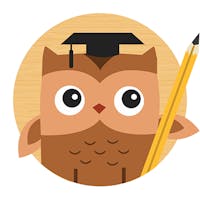An Individualized Education Plan (IEP) attempts to not only identify areas of challenge for a student—fine motor skills, language development, reading and comprehension, written and verbal language skills, social interaction, etc.—but to also put a mechanism in place to address those challenges. While the intentions behind an IEP are good, much work remains to be done. Curriculum itself must be personalized in order to truly meet the needs of students with learning disabilities.
Let's consider a few of the challenges that children with learning difficulties traditionally face and discuss how changes in practice might better serve their needs.
Rote memorization of expansive content
For a very content-intense or verbose subject like earth science, geography or history, simple comprehension is not enough; students must memorize many facts and be able to effectively recall them, frequently and in the correct sequence. This may come naturally to many kids, but for those with learning difficulties, this is certainly a challenge. If memorized, those facts will quickly be forgotten after a test or quiz, and the child may never use them.
My teenage son has grown up with learning disabilities, particularly around reading, comprehension and working memory issues. Math is his favorite subject, and he enjoys learning it. However, as a real-world example of the above, I saw him struggling to memorize the following facts for one of his earth science tests: The atmosphere is made up of 99% Nitrogen and Oxygen, 0.93% Argon and 0.039% CO2. Isn’t it enough to know the main fact about Nitrogen and Oxygen and be aware that there are trace amounts of other gases in the atmosphere?
The question then arises, How do you change the course and, more importantly, the depth of the course so that a child is able to learn just the right level of information and feel successful? In the absence of this adjustment, the burden is entirely on the child.
The solution is to provide only the information that is absolutely critical and not focus on irrelevant facts. Remember, it is not easy for the child to know what is important and what is not. If a student chooses to focus on a particular subject in later studies, he or she can then concentrate on learning all the facts to attain mastery.
Detailed study of multiple subjects
For children with learning difficulties, focusing on a preferred subject provides a sense of accomplishment and a small “win” while at the same time helping them improve. A child who is strong in math may have challenges with English reading comprehension and other subjects like history, geography, earth science, etc. that are dependent on it. If a child is having trouble with reading comprehension and expressive language skills, all the time should be devoted to addressing those challenges, rather than asking the child to learn every other subject in great detail. There is very little value in detailed study of multiple subjects without fully addressing such foundational challenges.
The solution here is to focus on the child’s strengths, improve them, boost the child’s confidence and use those skills as a vehicle to address challenges in other areas. Specifically, in the case of the above child, use the math skills to first boost his or her confidence, then leverage them as a means for improving the child’s reading and comprehension—via word problems, for example.
Meeting requirements for college admission
Each state has specific educational requirements that a student must meet in order to be eligible for a four-year program at a state university or college. While these may very well be achievable by most kids in high school, children with learning disabilities are all the more at a disadvantage. If a child doesn’t take courses that fall within these parameters, they lose the opportunity to attend a four-year college immediately after high school. The typical route is to first go to a community college, somehow do well there and later transfer to a state university or college. The entire responsibility is thrust upon the child.
The solution to this is to assess children on their strengths and corresponding core subjects and use that as criteria for admission to a four-year college, rather than a “one size fits all” policy.
Attending school in a foreign country, I saw firsthand how a modified curriculum that caters to different groups of children encourages success. In grades 9 and 10, students were divided into two classes. While students in both classes had to learn math and English at the same level, the scope and depth of the curriculum for physics, chemistry and biology in class A was much higher than in class B. Children with learning disabilities and those not getting good grades were assigned to class B.
While this was not personalization, it was certainly an attempt to resolve the “one size fits all” problem. This enabled those students in class B to excel in many subjects, which in turn gave them confidence to do well in math and English. This approach needs to be further extended to cater to each student’s individual needs. The driver here is the student and not the curriculum.
Regardless, all students completed their sophomore year and went on to study different courses in either the sciences or business for their last two years of high school. These students then successfully graduated and went on to universities and colleges to pursue degrees in sciences, medicine, engineering or business. According to the National Center for Learning Disabilities (NCLD), more schools and districts here in the U.S. need to adopt competency-based education for children with learning disabilities. This infographic summarizes their recommendations nicely.
In summary, our educational system has to adapt to the needs of individual students—particularly those with learning disabilities—by personalizing curriculum for them, rather than requiring the student to adapt to the curriculum that is provided. Specifically, eliminate the push for rote memorization, curtail the need to study every subject in great detail, instead helping children focus on their strengths, and modify the requirements for college admission so that all children are able to attend a four-year college and study the discipline of their choice. This is the only way children with learning disabilities can become independent, confident and productive members of society.



